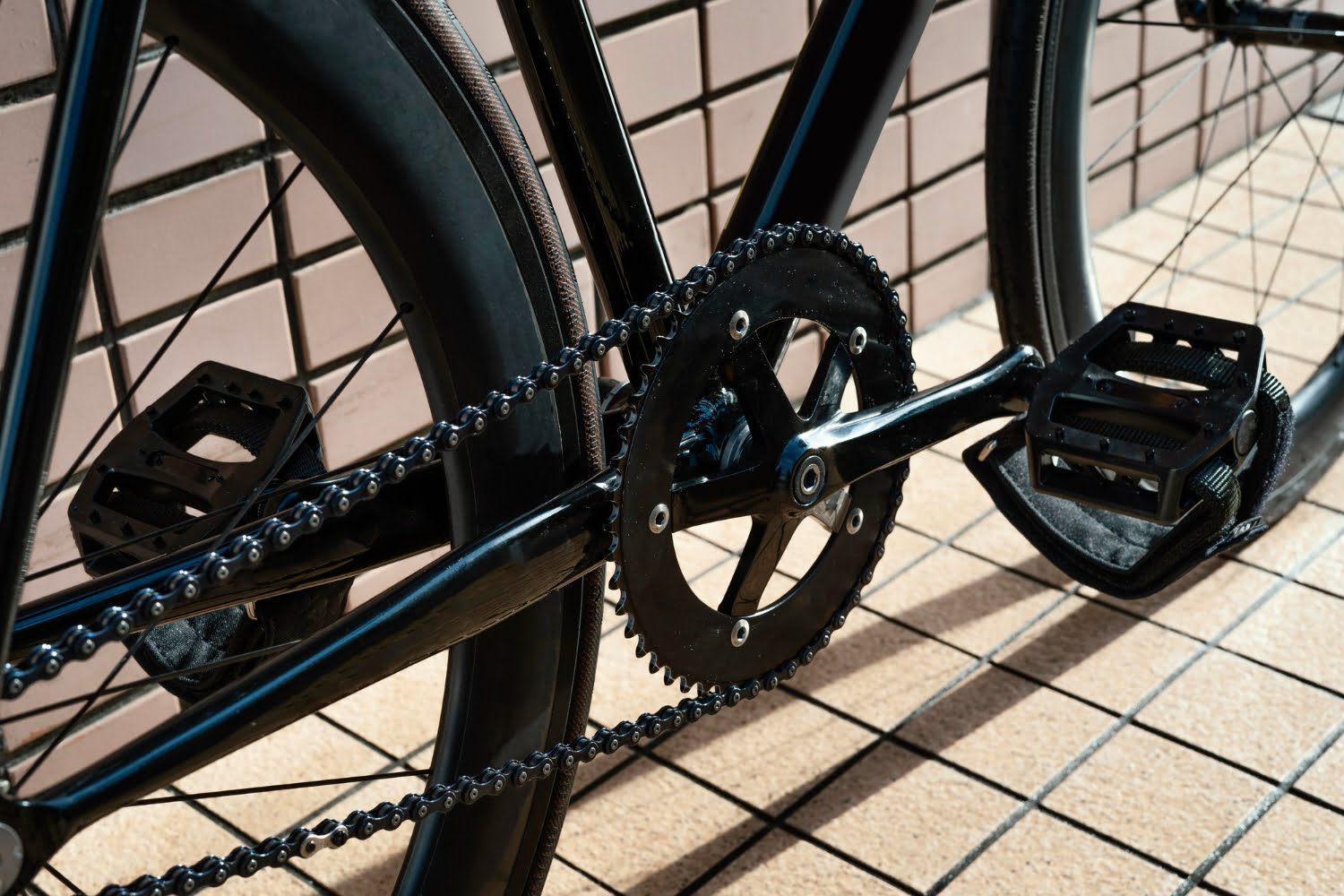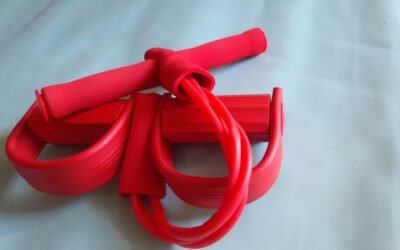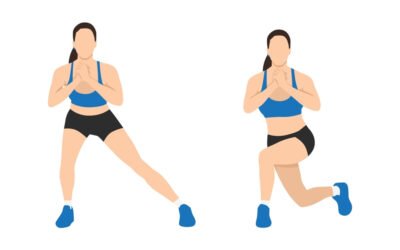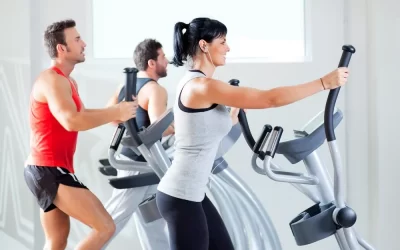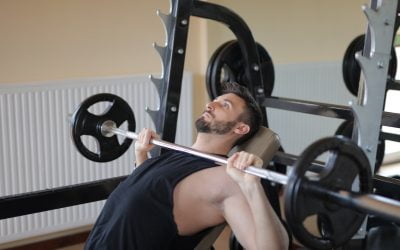A toe cage, also known as a toe clip, is a device that attaches to the front of a bicycle pedal to secure the rider’s foot in place. Commonly made from metal or plastic, the toe cage consists of a cage-like structure that encloses the front of the pedal and a strap that wraps over the top of the rider’s foot. The purpose of a toe cage is to enhance pedaling efficiency and provide additional stability while cycling. So, today we will learn benefits, side effects and how to use a toe cage?
Benefits of Toe Cage.
Toe cages, also known as toe clips or pedal cages, are accessories that attach to the pedals of a bicycle and provide various benefits for cyclists. These simple yet effective devices offer several advantages, making them a popular choice among both casual riders and professional cyclists. Here are some of the benefits of using toe cages:
1. Increased Pedal Efficiency.
Toe cages help to maximize pedal efficiency by allowing cyclists to apply force throughout the entire pedal stroke. With toe cages, riders can push down on the pedals using their quadriceps and hamstrings, as well as pull up using their hip flexors and calves. This balanced and efficient pedaling technique translates into improved power transfer and increased speed.
2. Enhanced Pedal Stability.
One of the key benefits of toe cages is the added stability they provide. By securing the foot to the pedal, toe cages prevent slippage and ensure a more secure connection. This increased stability is particularly advantageous when riding in challenging terrains or during sprints, as it allows cyclists to exert more force without fear of their foot slipping off the pedal.
3. Improved Control and Handling.
Toe cages also contribute to better control and handling of the bicycle. By providing a secure attachment point for the foot, they enable riders to maintain a consistent and stable position on the pedal. This stability is crucial for executing precise maneuvers, such as cornering, descending or navigating tight turns, thereby enhancing overall bike handling skills.
4. Safety and Confidence.
Toe cages offer an additional layer of safety and confidence, especially for novice riders or those who are not yet comfortable with clipless pedal systems. With toe cages, cyclists can enjoy the benefits of a secure foot-pedal connection without the need for special cycling shoes or the learning curve associated with clipless pedals. This increased confidence translates into a more enjoyable riding experience.
5. Versatility.
Another advantage of toe cages is their versatility. Unlike clipless pedals, toe cages can be used with regular athletic shoes, making them suitable for a wide range of riders. Whether commuting, touring or engaging in recreational cycling, toe cages provide a practical and adaptable solution for cyclists who prefer to ride with standard footwear.
6. Cost-Effective Solution.
In comparison to clipless pedal systems, toe cages offer a more affordable option. As they do not require specific cycling shoes or cleats, toe cages provide a cost-effective alternative for riders who want to enhance their performance without investing in expensive footwear or pedal systems.
Overall, toe cages provide multiple benefits that contribute to a more efficient, stable and enjoyable cycling experience. By improving pedal efficiency, enhancing control and handling, and providing added safety and versatility, toe cages have become a valuable accessory for cyclists seeking to optimize their riding performance.
Side effects toe cage.
Side effects of toe cage use can vary depending on the individual and the specific circumstances. While they can be beneficial for certain individuals, there are potential side effects to consider.
1. Discomfort and Pain.
Wearing toe cages for an extended period of time or using them improperly may cause discomfort or pain in the toes, especially if they are too tight or excessively compress the foot. This can be particularly problematic for individuals with pre-existing foot conditions or injuries.
2. Reduced Flexibility.
Toe cages restrict the natural movement of the toes, limiting their flexibility. Over time, this can lead to decreased flexibility in the foot and potentially affect overall foot function. It is important to strike a balance between the support provided by the toe cage and maintaining healthy foot movement.
3. Risk of Injury.
Although toe cages are designed to enhance stability, they may increase the risk of certain injuries. For example, if the foot becomes trapped in the cage during a fall or accident, it may be more difficult to quickly release the foot, potentially leading to more severe injuries. It is crucial to use toe cages responsibly and be aware of the potential risks involved.
4. Numbness and Tingling.
Some individuals may experience numbness or tingling sensations in their toes while wearing toe cages. This can be caused by excessive pressure on the nerves or blood vessels in the foot. If these symptoms persist or worsen, it is important to discontinue use and consult a healthcare professional.
5. Skin Irritation.
Continuous friction between the foot and the toe cage can cause skin irritation, blisters or calluses. It is essential to ensure that the toe cages fit properly and are adjusted to avoid excessive rubbing, which can lead to discomfort and potential skin problems.
6. Decreased Circulation.
In rare cases, toe cages that are too tight or restrict blood flow to the foot may cause decreased circulation. This can result in cold feet, discoloration or even tissue damage. If any signs of impaired circulation occur, it is crucial to remove the toe cages immediately and seek medical attention.
To minimize the potential side effects of toe cage use, it is important to choose the appropriate size, adjust them correctly and use them in moderation. Additionally, consulting with a healthcare professional or a specialist in foot biomechanics can provide personalized guidance and recommendations to ensure safe and effective usage.
How To Use a Toe Cage?
To properly use a toe cage, follow these steps:
1. Begin by selecting a suitable toe cage that fits your foot size. Toe cages are typically made of durable materials such as plastic or metal and come in various sizes. It is crucial to choose the correct size to ensure optimal comfort and safety.
2. Once you have selected the appropriate toe cage, put on your cycling shoes. Toe cages are commonly used with cycling shoes, as they allow for a more secure connection between your foot and the pedal.
3. Place your foot on the pedal, positioning the ball of your foot directly over the pedal spindle. Ensure that your shoe is properly aligned and centered on the pedal surface.
4. Slip the toe cage over the front of your shoe, ensuring that it securely attaches to the pedal. Toe cages typically have adjustable straps or fasteners that can be tightened or loosened to fit your shoe snugly. Adjust these straps accordingly to achieve a comfortable and secure fit.
5. Once the toe cage is securely fastened, make sure that your foot is positioned comfortably within the cage. Your toes should be able to move freely, but also have enough support to prevent slipping off the pedal.
6. Begin cycling, using your entire foot to push the pedals. With a toe cage, you can effectively transfer power from your legs to the pedals, maximizing your cycling efficiency. The cage provides added stability and control, particularly during intense cycling sessions or when riding on challenging terrains.
7. When you need to remove your foot from the pedal, simply loosen the straps or fasteners of the toe cage and slide your foot out. It is essential to practice this motion to ensure smooth disengagement when necessary.
Remember to take some time to adjust and familiarize yourself with the toe cage before embarking on longer rides or more intense cycling sessions. With consistent use and practice, you will become more comfortable and proficient in utilizing a toe cage, enhancing your cycling experience.
How To Select a Perfect Toe Cage?
When it comes to selecting the perfect toe cage, there are several factors to consider in order to enhance your cycling performance and ensure maximum comfort and safety. Here are some key points to expand on when selecting a toe cage:
1. Foot Size and Compatibility.
Start by determining your foot size and the type of cycling shoes you own. Toe cages come in various sizes, so it is crucial to choose one that fits your feet properly. Ensure compatibility with your cycling shoes, as some cages may not work well with certain shoe designs.
2. Material and Durability.
Consider the material used in constructing the toe cage. Common materials include steel, aluminum or plastic. Each has its own advantages and disadvantages in terms of durability, weight and flexibility. It is essential to choose a toe cage made of high-quality materials that can withstand the rigors of cycling and provide long-lasting performance.
3. Pedal Compatibility.
Assess the type of pedals you use or plan to use. Some toe cages are specifically designed for certain pedal systems such as clipless pedals or platform pedals. Ensure that the toe cage you select is compatible with your pedal system to ensure a secure fit and optimal power transfer.
4. Adjustability and Customization.
Look for toe cages that offer adjustable straps or multiple mounting positions. This allows you to fine-tune the fit and customize the position of the cage to match your foot shape, resulting in a more comfortable and efficient pedal stroke. Adjustable straps also provide the flexibility to accommodate different shoe sizes or riders with varying foot widths.
5. Ease of Installation.
Consider the ease of installation and removal when selecting a toe cage. Some cages feature a simple and quick installation process, while others may require additional tools or expertise. Opt for a toe cage that can be easily installed and removed without much hassle, allowing for convenient adjustments or replacements when needed.
6. Comfort and Safety Features.
Pay attention to additional comfort and safety features offered by certain toe cages. Some models may include padded straps or ergonomic designs to reduce pressure points and enhance comfort during long rides. Additionally, certain toe cages may incorporate reflective materials or bright colors to increase visibility and promote safer cycling in low-light conditions.
7. Price Range and Budget.
Determine your budget range before finalizing your toe cage selection. Toe cages can range in price depending on the brand, material and additional features offered. It is advisable to invest in a quality toe cage that fits within your budget while meeting your specific needs, rather than compromising on durability or performance.
By considering these factors, you can confidently select a toe cage that aligns with your foot size, cycling shoes, pedal system and desired comfort and safety features. Remember to prioritize quality and compatibility to ensure an optimal cycling experience and maximize your pedaling efficiency.
| Read Now: How to Do a Killer Diamond Push Ups |
Toe Cage vs Toe Clips: Which is Better?
When it comes to biking, there are various accessories and components that cyclists can choose from to enhance their riding experience. Two popular options for securing the feet to the pedals are toe cages and toe clips. Both of these attachments provide a level of stability and efficiency, but they differ in their design and functionality.
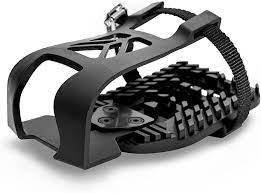
Toe cages, also known pedal straps are typically made of durable materials such as nylon or metal. These cages attach to the front of the pedal, creating a secure space for the cyclist’s toes. The main purpose of toe cages is to prevent the foot from slipping off the pedal during vigorous pedaling. By encasing the front part of the foot, toe cages offer a stable and locked-in feeling, allowing riders to exert more power with each pedal stroke. Additionally, toe cages enable riders to pull up on the pedals, engaging different muscle groups and maximizing efficiency.
On the other hand, toe clips also referred as toe straps are similar in concept but differ in design. Toe clips consist of an adjustable strap that fastens the foot to the pedal. Unlike toe cages, toe clips do not enclose the entire front part of the foot. Instead, they utilize a strap that is attached to the pedal on one side and wraps around the shoe on the other side. This setup provides a secure connection between the foot and pedal, preventing slippage during intense rides. Toe clips also allow riders to pull up on the pedals, enhancing the efficiency and power output.
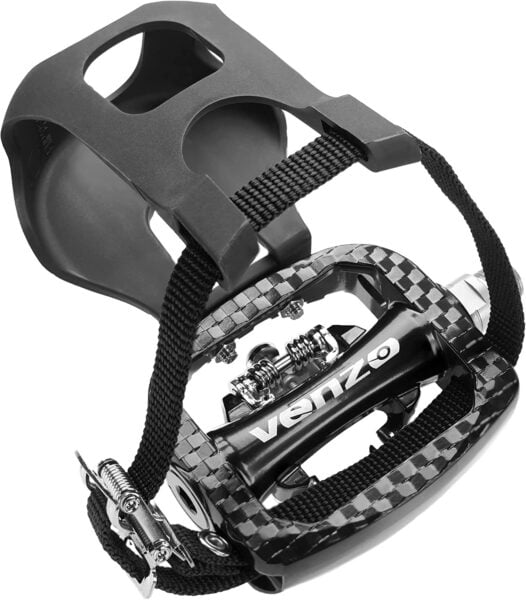
While both toe cages and toe clips offer advantages in terms of foot stability and power transfer, they have their own set of considerations. Toe cages tend to provide a more comprehensive enclosure of the foot, ensuring a secure fit and minimizing the risk of slippage.
However, this design can make it slightly more challenging to get in and out of the pedals quickly, which can be a disadvantage in competitive situations or stop and go urban riding. On the other hand, toe clips offer a simpler and quicker entry and exit process, which is highly beneficial for riders who frequently need to put their feet down or dismount rapidly.
Ultimately, the choice between toe cages and toe clips depends on the individual rider’s preferences and needs. Some cyclists may prioritize maximum foot security and opt for toe cages, while others may value the convenience and ease of use provided by toe clips. Regardless of the choice made, both accessories serve as valuable tools for enhancing pedaling efficiency and stability, ensuring an enjoyable biking experience.
Bottom Line.
The toe cage is a simple yet effective device that provides protection and support for the toes during physical activities. Its design allows flexibility and comfort, while still ensuring the necessary stability and safety. Whether used for sports, work or everyday activities, the toe cage offers a practical solution for preventing injuries and promoting foot health. With its affordable price and easy application, it is a worthwhile investment for anyone seeking to protect their toes and enhance their overall performance.

 Workout
Workout
 Meditation
Meditation


 Stories
Stories


 Podcast
Podcast E-book
E-book